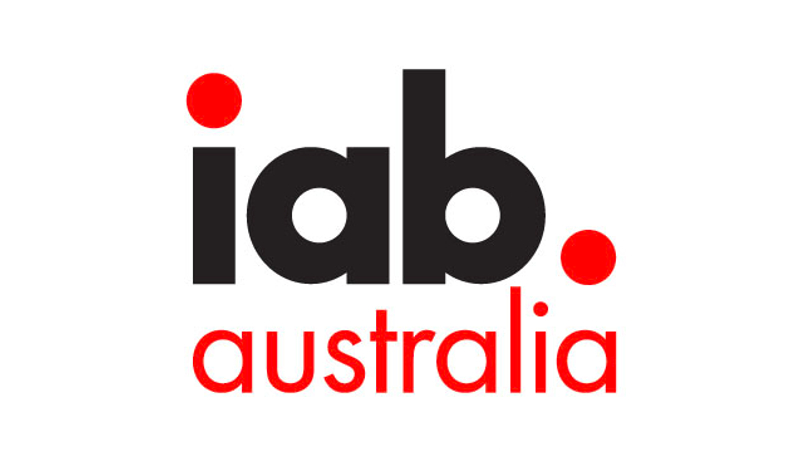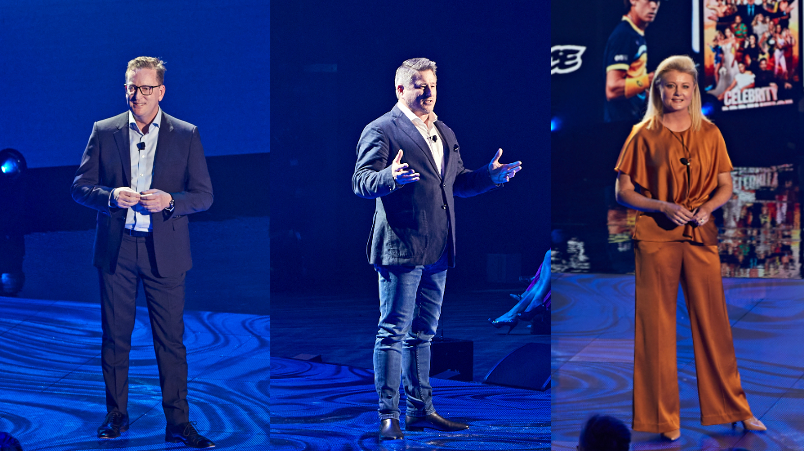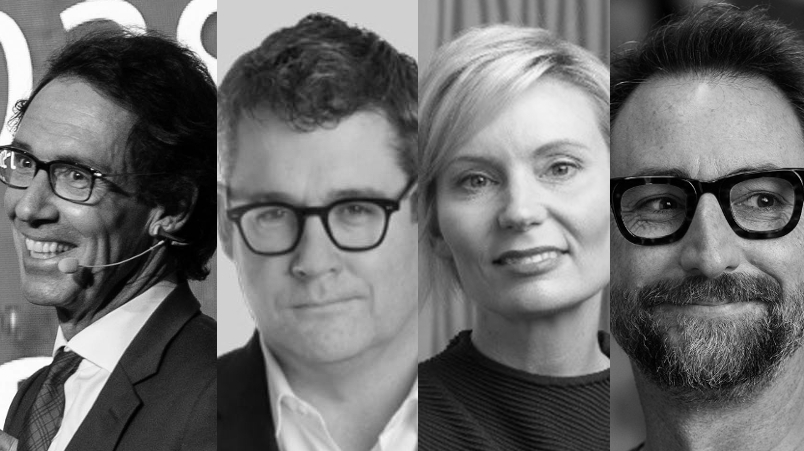Lots of little bits of attention: Analytic Partners’ Grace Kite, Jellyfish’s Tom Roach challenge ad wear-out, attention playbook as algorithms dictate new terms
An Mi3 editorial series brought to you by
QMS


Analytic Partners VP Dr Grace Kite: Aggregating fragmented reach - lots of little bits - is the new reality.
An Mi3 editorial series brought to you by
QMS

Packaging up lots of fragmented audience channels with consumer attention thresholds lower than what many say is effective - including the work from Dr Karen Nelson-Field and Amplified Intelligence - is a reality, says Analytic Partners' VP, Dr Grace Kite. "Aggregate Attention" in a study by Havas Media Network and Lumen shows "seeing lots of little ads is a perfectly good substitute for lack of attention on any one ad," Kite posits. Equally Tom Roach, a one-time understudy to 'The Long and Short of It' co-author Les Binet at Adam&EveDDB, now at Jellyfish, challenges System1 – and Mark Ritson's Cannes keynote – that ad wearout doesn't exist. Instead, we're facing an emerging "battle between the theorists" of ad effectiveness and the all powerful platforms whose algorithms reward freshness – daily.
So you've got this battle between the theorists saying, ‘just do one big thing’ and the platforms, the media reality, which is that we need lots of stuff, and so how do we square that?”

TV price inflation.
Digital video and paid social media have displaced TV in terms of brand building ROI, per Dr Grace Kite, VP at Analytic Partners. The Magic Numbers founder also countered Dr Karen Nelson-Field’s studies that suggest most ads on digital channels are not getting enough attention to build memories and therefore brands.
Kite told Cannes delegates that lots of little bits of attention – even if they don’t meet Nelson-Field’s 2.5 second attention threshold – can do the same brand building job, provided media buyers spread them across lots of channels and contextual niches.
Across her two decades of analysing brand campaign effectiveness, Kite said TV was always top of the pile. “It had the highest ROI, it had long lasting effects and it was genuinely capable of driving growth.”
TV connects with people, grabs attention, drives emotional responses via storytelling and enables brands to lodge memories in people’s minds. “So it is brilliant for brand building,” said Kite. “But there is a problem.”
Basically, phones, the internet, and “young people leaving TV,” per Kite. In the UK “commercial impressions of ads on TV among 16-34 year olds have dropped by 70 per cent in the last 10 years or so”, she said, “and the same thing is happening all over the world.”
Which means TV has become “really, really expensive” and therefore its ROI is falling relative to other channels (something others, such as Ebiquity, have long forecast), “and that is now flowing through to payback,” according to Kite.
The upshot is that “digital video, YouTube and paid social has a higher return on investment”, per Kite, citing Analytic Partners ROI Genome data, based on analysis of “something like 850 businesses and hundreds of millions of advertising spend”.
Kite said she was “a bit gutted about this” and underlined that TV remains “fantastic for brand building and is still part of every plan, still important in the mix. But that’s just it – it’s part of the mix: You’re not in the situation where you can pop your spending on TV, sit back and know that your brand is being built successfully. So we need a new plan.”

Media ROI by channel according to Analytic Partners.
Lots of littles, attention countered
That new plan involves packaging up lots of channels as audiences hop about, spending “smaller and smaller blocks [of time] on more and more platforms”, said Kite.
Context, she said, is key, citing Analytic Partners data which suggests “you can increase return on investment by at least 20 per cent and as much as 150 per cent by appearing in the right context”.
Kite then cited Dr. Karen Nelson-Field’s earlier Cannes presentation in which the Amplified Intelligence chief suggested 85 per cent of ads on digital channels fail to gain the minimum amount of attention – 2.5 seconds – required to embed memories and therefore build brands.
“It sounds like a disaster,” said Kite. “Karen is a fantastic researcher … but she isn’t the only person working on attention.”
Kite offered a counterview via a report – Aggregate Attention – based on 9,000 niche studies mapping ad exposures to brand awareness by Havas Media Network and Lumen.
“What it showed is that seeing lots of little ads is a perfectly good substitute for lack of attention on any one ad,” per Kite. “It works for brand building, and it works for sales.” She cited Meta research across its platforms which drew a similar conclusion. “What they saw is you actually get more sales if you aggregate moments versus continuous moments – and it does work for sales, even if you are below that 2.5 seconds attention threshold, as long as they were working together in an aggregated way.”
Hence the need to add more channels to the mix to achieve that aggregate ‘lots of littles’ effect, per Kite.
“Every time a new platform is added to the media mix, it has its own effect, but it also delivers a synergy effect where it is working with the other channels – and the size of the synergies are surprisingly substantial … Remember that, because it makes a really big difference,” added Kite.
While the likes of Ehrenberg-Bass Institute Director Professor Byron Sharp have suggested the network effects of advertising across channels are “a bit of a myth”, Kite thinks ongoing fragmentation holes that view.
“The benefits of having five media channels … is up to 70 per cent more return on investment, she said, citing Analytic Partners and IPA ARC data.
Kite’s key takeout for those building media plans: “Number one, appear next to their niche. Two, target lots of little bits of attention. Three, spread your spend across lots of channels.”

Channel synergies according to Analytic Partners, Kantar and the IPA.
Jellyfish’s Tom Roach worked with Les Binet for years, leading strategy and effectiveness at Adam&EveDDB. But he dovetailed with Grace Kite at Cannes to counter long-held marketing effectiveness wisdom around ad wear-out. On social media platforms, per Roach, it doesn’t apply. In fact, he suggested the opposite is true. Which means pumping out more ads is required to avoid reach being crimped by algorithms uprating fresh content and downweighting the old in a bid to keep users on platform.
“So we've got a problem, because what the data and the effectiveness theories tend to say doesn't really fit with what the increasingly powerful platforms tell us we need to do, and tell us what their algorithms want from us as creative people,” said Roach.
“You've got people like System1, and all of the evidence, saying ‘advertising wear out does not exist’. In theory… But on the platforms, particularly on places like Meta, they're really quick to say, ‘No, we need more fresh content’… So you've got this battle between the theorists saying, ‘just do one big thing’, and the platforms, the media reality, which is that we need lots of stuff, and so how do we square that?”
Moreover, Meta rewards fresh content with greater reach and lower ad costs, per Roach.
“Diversity of content is helpful for their algorithms to reach new audiences. Meta will say ‘when a creative is too similar, it reaches people repeatedly and wears out for that reason – and doesn't get you the reach you need. Meta research says, ‘if you have 20 plus creatives, you'll get lower CPAs and greater incremental reach’.” (Roach has previously cited Meta stats suggesting a 29 per cent lower incremental CPA for campaigns with 20-plus creatives versus fewer, and 9 per cent reach gains for diverse creative versus sticking with the same ad).
Which underlines the dichotomy between “orthodox” advertising effectiveness rules around repetition, consistency and leaving the same ads to run for years, as System1, Mark Ritson and P&G CMO Marc Pritchard underlined at Cannes, and what platform algorithms are rewarding. Roach outlined five principles to bridge that divide.
Firstly, channel synergies – the importance of which has accelerated sharply over the last decade, per Roach, citing Kantar data which suggests pre-2014, “only around 18 per cent of brand impact was coming from synergy effects. But from 2021 onwards, about 45 per cent of brand impacts are coming from places where there are multiple channels doing the same thing … So if you are not doing that, then you lose out.”

Secondly, Roach backed Grace Kite’s view on aggregating ‘lots of little hits” of attention. While Professor Byron Sharp may have different beliefs on the importance of channel synergies (“it’s a bit of a myth”), Roach cited Sharp’s view that “fleeting” moments of attention will do the job.
“It’s a good creative thing to try and make [an ad] with some ambition and gets people to watch a few more seconds. But let’s just be honest and accept that most of the time we won’t get that … People aren’t going to be watching our beautiful 90-second film in its entirety, as much as we would want them to.”
Thirdly, ensure creative is fit for platform (i.e. bespoke to that platform, not a TV ad cut-down), said Roach, with assets integrated across platforms or risk losing up to 60 percentage points of brand impact. Far too many advertisers are failing on that front, per Roach.
“CreativeX, an AI creative evaluation company, reckons about 50 per cent of media budgets are put behind ads that are not fit for platform in very basic ways – like no branding, the sound is on or off wrongly, it is wrongly formatted. Really simple things. This is about getting some basics right.”
Fourth: “Employing imaginative repetition,” said Roach. In other words, make more ads, make them different, but make them consistent. “Try and create a sense of emotional coherence across your advertising ... create a system of ideas as opposed to brands as ‘a big idea’. Try to create campaigns which are connected to one core strategic positioning, but that are executed in diverse ways.”
Fifth: Use AI to keep up with the demand to feed the platforms. Which, naturally, is where Jellyfish and $4bn generative AI marketing parent company Brandtech comes in. Roach duly showed off creative assets for Moodlings, an edibles brand created in one day by Brandtech-owned AI platform, Pencil.
“We made a brand and all the assets it would need to launch in 24-hours … [using] all of the principles System1 would tell you to create … with a 30-second video which System1 tested well above the top 10 per cent of ads they’ve ever tested. So it’s perfectly possible to be creative with these tools – you can just do it much, much quicker,” said Roach, which is required given the volume of assets brands are now churning out.
“This is the nature of the media and creative landscape we live in.”





